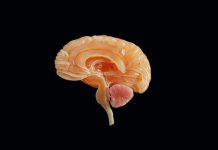
Researchers at Cedars-Sinai have made significant strides in understanding Alzheimer’s disease by studying the human retina.
Their findings could pave the way for new diagnostic tools and treatments for this debilitating condition.
Alzheimer’s disease is known for its ruthless impairment of memory and cognitive functions. Currently, diagnosing Alzheimer’s is complex, with no single test able to definitively detect the disease.
This gap in diagnostics has led scientists to explore new methods that could provide earlier and more accurate detection.
In a recent comprehensive study, a team at Cedars-Sinai investigated the retina, which is effectively an accessible part of the brain, making it an ideal candidate for studying the central nervous system. By examining the retina, they hoped to find a non-invasive method to monitor brain health.
The study involved detailed analysis of retinal and brain tissues from 86 donors over a period of 14 years. These included individuals with normal cognitive function, those with mild cognitive impairment (early stages of Alzheimer’s), and patients with advanced Alzheimer’s dementia.
Researchers meticulously measured the physical attributes of the retina and analyzed proteins, inflammation markers, and cell loss.
One of the critical findings was the presence of amyloid beta 42, a protein closely linked to Alzheimer’s disease, which was abnormally accumulated in the retinal ganglion cells.
They also noted a significant reduction in microglial cells, which are essential for clearing amyloid proteins, in both the retina and brain.
Additionally, the study revealed higher numbers of astrocytes and microglia around amyloid plaques, and various molecules and pathways involved in inflammation and cell death.
These changes in the retina were directly correlated with alterations in brain regions responsible for memory, navigation, and temporal perception.
Remarkably, some of these retinal changes were detected even in individuals who were cognitively normal or showed very mild impairment. This suggests that retinal analysis could potentially serve as an early indicator of cognitive decline.
The findings from Cedars-Sinai not only deepen our understanding of Alzheimer’s but also offer a promising new avenue for early diagnosis.
The ability to detect Alzheimer’s through retinal examination could lead to earlier intervention, potentially slowing the progression of the disease.
As research continues, the hope is that these insights will lead to the development of effective treatments that can target the disease more directly and perhaps halt its progression.
This study not only sheds light on the biological underpinnings of Alzheimer’s but also illustrates the potential of innovative approaches to tackling one of the most challenging diseases affecting the elderly.
This advancement in Alzheimer’s research underscores the importance of ongoing studies into the mechanisms of the disease and the search for effective treatments.
For those interested in brain health, these findings are a crucial piece of the puzzle in the ongoing battle against cognitive decline.
If you care about Alzheimer’s, please read studies about Vitamin D deficiency linked to Alzheimer’s, vascular dementia, and Oral cannabis extract may help reduce Alzheimer’s symptoms.
For more information about brain health, please see recent studies about Vitamin B9 deficiency linked to higher dementia risk, and results showing flavonoid-rich foods could improve survival in Parkinson’s disease.
Copyright © 2024 Knowridge Science Report. All rights reserved.



